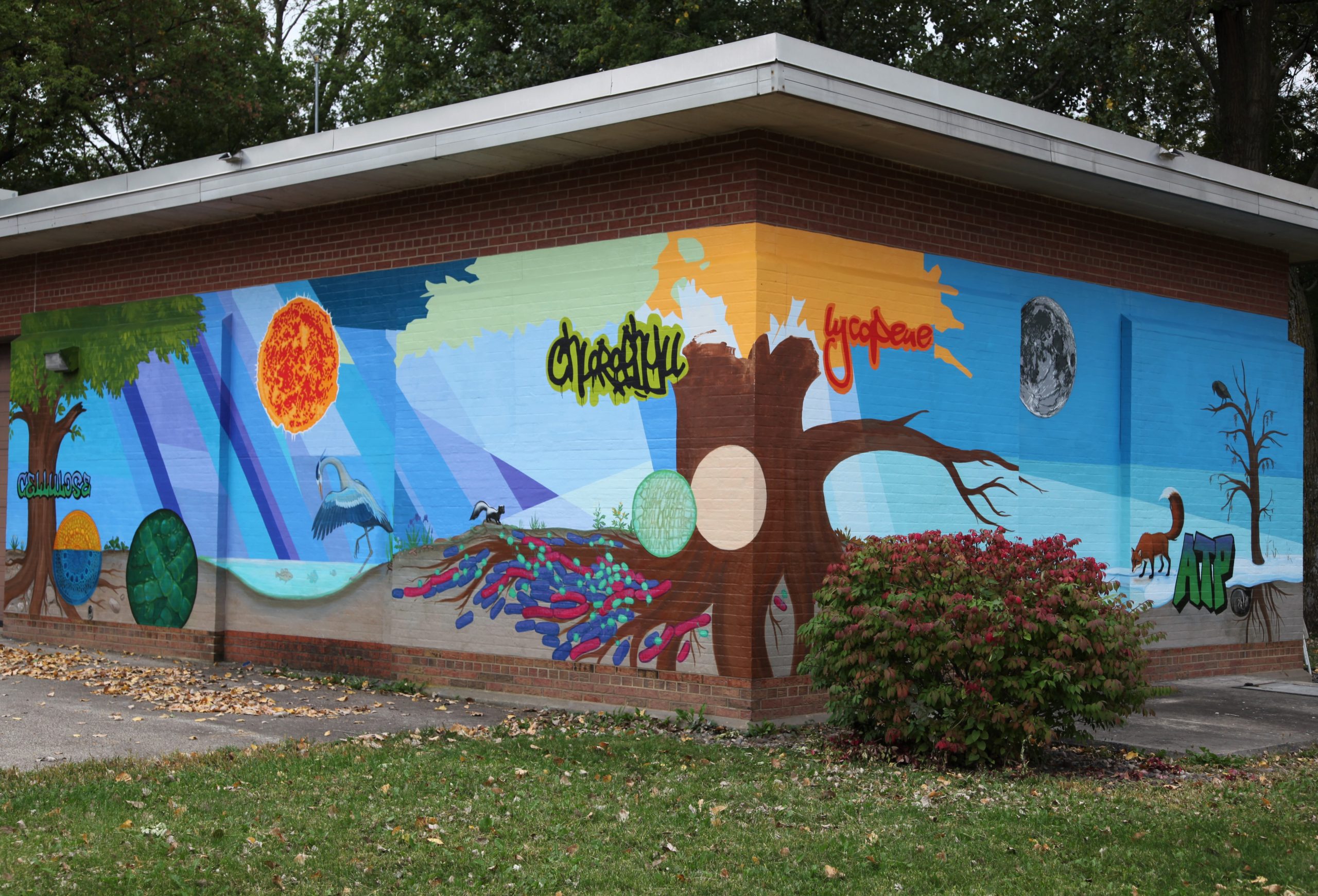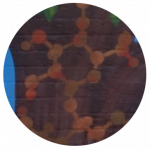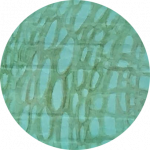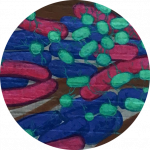
Molecular Structure
Madison Metropolitan Sewerage District, Pumping Station 8
901 Plaenert Drive, Madison WI 53713
The Molecular Structure mural plays with the visible and hidden beauty of our world. By reflecting the Wisconsin landscape, the mural zooms into microscopic views of nature, and then dives deeper into molecular structures that make up our surroundings.
Pumping station 8, is essential to keeping life going in Madison. Each day, this station pumps about 13 million gallons of wastewater away from homes and businesses to the Nine Springs Wastewater Treatment Plant for treatment and safe return to the environment. The Madison Metropolitan Sewerage District is dedicated to protecting public health & the environment, through innovative engineering and resource recovery. At the treatment plant, chemistry (including molecular structure!) is a key part of bringing water from flush to fresh.
Wonderful Water
All living organisms need water to survive. Our own human bodies are 60% water. Tree roots are designed to grow towards water and nutrient sources. See the inner workings of a tree.

Cellulose is glucose molecules made through photosynthesis. It is critical for strengthening trunks to hold up even the tallest of trees.

Trees provide oxygen, store carbon, enrich soil, and stabilize the ground. Roots transport water, minerals and nutrients to the whole tree.
Terrific Trees
The trunk and roots of a tree play important roles for the tree’s health and stability. Now let’s explore tree trunks in more detail. Just like humans, trees need to have tissue that transfer materials from one location to another. We have arteries and veins. A tree has Xylem and Phloem.

Phloem are living tubular cells located right under the bark that transport sugar from leaves to all parts of the tree.

Xylem makes the annual rings of a tree. It is made up of dead tubular cells that transport water up from the roots to the leaves.

Sandwiched between Phloem and Xylem is the vascular Cambium. It is responsible for the secondary growth of stems and roots.
Making Medicine
We can even unearth new antibiotic-producing microbes that can address a worldwide health threat: antibiotic resistance. Learn more from Tiny Earth.

Roots create rich microbial soil environments, contributing to thriving ecosystems.